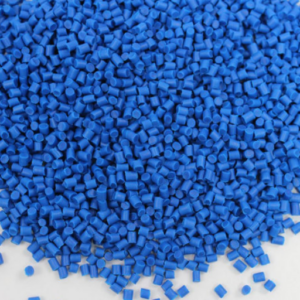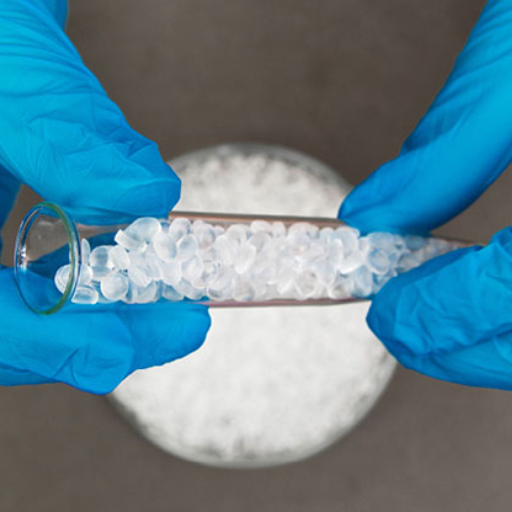Thermoplastic elastomers (TPE) are unique materials that combine the elasticity of rubber with the processability of plastics. Understanding how to effectively use heat to melt TPE is crucial for professionals in manufacturing, prototyping, and materials science. This guide provides a detailed and authoritative examination of the various methods and parameters involved in melting TPE using heat. Readers will gain insights into the fundamental principles of thermal processing, the types of equipment used, and the safety considerations necessary for handling TPE. Whether you are an engineer, a technician, or a researcher, this comprehensive guide aims to equip you with the knowledge and skills to optimize your application of TPE.
What is Thermoplastic Elastomer (TPE)?
Image source:https://www.elastomer.kuraray.com/
Thermoplastic elastomers (TPE) are a class of copolymers or a physical mix of polymers that consist of materials with both thermoplastic and elastomeric properties. Unlike traditional thermoset rubber, TPE can be melted, processed, and re-melted without significant degradation. TPEs exhibit the flexible, elastic characteristics of rubber, such as high elongation and recovery, while maintaining the moldability of thermoplastics, allowing for versatile and efficient processing. These materials are commonly used in applications requiring flexible, durable, and lightweight components, ranging from automotive parts to consumer goods and medical devices.
Understanding the Properties of TPE
As someone deeply involved in the field of materials science, I recognize that understanding the properties of Thermoplastic Elastomers (TPE) is fundamental to optimizing their application. TPEs offer distinct advantages, including their ability to withstand extensive flex cycles, maintaining their shape and performance under repeated stress. They also exhibit excellent resistance to environmental factors such as UV exposure, ozone, and a wide range of chemical substances. The versatility in their hardness and elasticity can be tailored to meet specific requirements, thanks to the diverse types of TPEs available, including styrenic block copolymers (SBCs), thermoplastic olefins (TPOs), and thermoplastic polyurethanes (TPUs). Additionally, TPEs are known for their recyclability, which presents significant benefits for sustainability in manufacturing processes.
Types of TPE and Their Characteristics
1. Styrenic Block Copolymers (SBCs)
Styrenic Block Copolymers, such as SEBS (styrene-ethylene-butylene-styrene) and SBS (styrene-butadiene-styrene), are known for their flexibility and ease of processing. SBCs typically exhibit shore hardness values ranging from 0A to 50D and have excellent elasticity and clarity, making them suitable for applications requiring soft-touch properties and transparency. They have good resistance to weathering and ageing but moderate chemical resistance.
2. Thermoplastic Olefins (TPOs)
TPOs are blends primarily composed of polypropylene (PP) and EPDM rubber. They offer outstanding impact resistance, low temperature flexibility, and excellent chemical resistance. With shore hardness values generally between 50A and 90A, TPOs are extensively used in automotive applications, such as bumper covers and interior components, due to their durability and cost-effectiveness.
3. Thermoplastic Polyurethanes (TPUs)
TPUs are a class of TPEs characterized by high abrasion resistance, excellent elasticity, and superior mechanical properties. TPUs display shore hardness ranging from 60A to 85D, and their chemical resistance spans various oils, fuels, and solvents. These properties make TPUs ideal for demanding applications like industrial hoses, footwear, and medical tubing. They also maintain their performance across a broad temperature range, enhancing their versatility.
4. Copolyester Elastomers (COPEs)
COPEs combine the strength and durability of engineering plastics with the flexibility and resilience of elastomers. With shore hardness values ranging from 40D to 72D, COPEs are known for their high tensile strength, good chemical resistance, and excellent low temperature performance. These materials are suitable for applications such as automotive parts, electrical connectors, and sports equipment.
5. Thermoplastic Vulcanizates (TPVs)
TPVs consist of dynamically vulcanized rubber particles dispersed within a thermoplastic matrix, often PP. They combine the processability of plastics with the performance of elastomers, showing enhanced resistance to compression set, heat, and fluids. TPVs generally have shore hardness values between 25A and 50D and are used in applications requiring long-term durability and flexibility, such as seals, gaskets, and hoses.
Each type of TPE offers a unique balance of properties that make it suitable for specific applications. When selecting a TPE, it is essential to consider the technical parameters such as shore hardness, chemical resistance, temperature performance, and processing characteristics to ensure the material meets the required specifications.
Applications of TPE in Various Industries
Thermoplastic elastomers (TPEs) have a wide range of applications across various industries due to their versatile properties. Here, we explore the key industries where TPEs play a crucial role, supported by technical parameters:
1. Automotive Industry
In the automotive sector, TPEs are extensively used for interior and exterior components. They offer excellent durability, flexibility, and resistance to automotive fluids, making them ideal for applications such as seals, gaskets, weatherstripping, and interior trims. The typical shore hardness for automotive TPE applications ranges from 55A to 75D, ensuring a balance between flexibility and strength.
Technical Parameters:
- Shore Hardness: 55A to 75D
- Tensile Strength: 9-20 MPa
- Elongation at Break: 300-700%
2. Medical Industry
TPEs used in the medical field need to meet stringent biocompatibility standards. They are often employed in devices such as catheters, tubing, and syringe components due to their excellent flexibility, sterilization capability, and biocompatibility. Medical-grade TPEs typically exhibit a wide range of hardness from 30A to 90A, to cater to different medical applications.
Technical Parameters:
- Shore Hardness: 30A to 90A
- Tensile Strength: 8-25 MPa
- Elongation at Break: 400-1000%
3. Consumer Electronics
In the realm of consumer electronics, TPEs are favored for their ergonomic and aesthetic properties. They provide a soft touch, impact resistance, and good grip, making them ideal for applications such as smartphone cases, headphone cables, and wearable devices. TPEs used in electronics require shore hardness values typically between 40A and 90A, ensuring adequate flexibility and durability.
Technical Parameters:
- Shore Hardness: 40A to 90A
- Tensile Strength: 10-18 MPa
- Elongation at Break: 350-800%
In all these applications, selecting the appropriate TPE with the right balance of technical parameters is crucial to ensure performance and longevity. These technical characteristics justify the application abilities of TPEs across various demanding industries.
How Does TPE Compare to Other Thermoplastics?
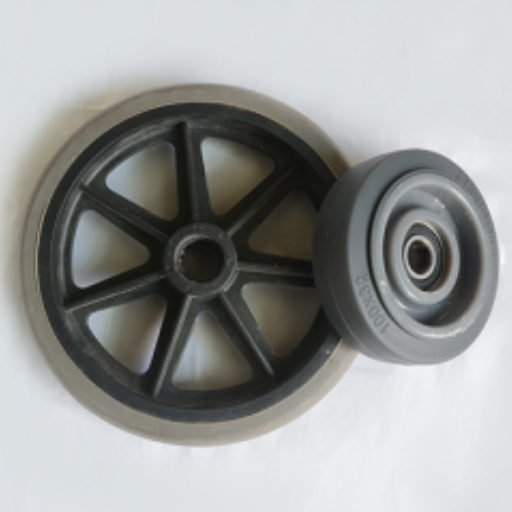
Thermoplastic elastomers (TPEs) distinguish themselves from other thermoplastics through their unique combination of elasticity and processability. Unlike traditional thermoplastics, which are rigid and can crack under stress, TPEs exhibit rubber-like flexibility and resilience, enabling them to withstand significant deformation without permanent damage. TPEs also offer superior elongation at break, tensile strength, and a broad range of hardness values, which makes them versatile for various applications. Furthermore, TPEs can be processed using conventional plastic manufacturing techniques such as injection molding and extrusion, similar to other thermoplastics, but with added benefits like faster cycle times and improved energy efficiency. These properties collectively make TPEs an optimal choice for applications requiring durability, flexibility, and cost-effective manufacturing.
TPE vs. TPU: Key Differences
While Thermoplastic Elastomers (TPEs) and Thermoplastic Polyurethanes (TPUs) share several similarities, they also exhibit distinct technical differences that make them suitable for different applications.
Elasticity and Flexibility:
- TPEs offer a broad range of Shore hardness values (40A to 90A), providing flexibility from soft rubber-like textures to harder materials.
- TPUs typically exhibit Shore hardness values from 60A to 95A, which makes them generally harder and more rigid than TPEs.
Tensile Strength and Elongation:
- TPEs have tensile strengths ranging from 10 to 18 MPa and elongation at break between 350% and 800%.
- TPUs surpass TPEs in tensile strength, typically offering 25 to 70 MPa, and possess high elongation at break values (400%-800%), providing both strength and flexibility.
Abrasion and Wear Resistance:
- TPUs are renowned for their exceptional abrasion resistance, making them suitable for high-wear applications such as footwear and industrial components.
- TPEs also provide good abrasion resistance, though they generally do not match the levels seen in TPUs.
Chemical Resistance:
- TPUs exhibit superior resistance to oils, greases, and various solvents, which makes them ideal for applications involving exposure to harsh chemicals.
- TPEs offer moderate chemical resistance but may degrade quicker in aggressive chemical environments.
Processability:
- Both TPEs and TPUs can be processed using conventional plastic manufacturing techniques such as injection molding, extrusion, and blow molding. However, TPUs tend to require higher processing temperatures compared to TPEs.
Energy Efficiency:
- TPEs generally boast shorter cycle times and enhanced energy efficiency during processing compared to TPUs, contributing to cost-effective manufacturing.
Understanding these technical parameters helps in selecting the appropriate material for specific industrial applications, thereby ensuring optimal performance and longevity.
Comparing TPE to Thermoset Polymers
Mechanical Properties:
- TPEs exhibit a wide range of mechanical properties, such as tensile strength (ranging from 10 to 18 MPa) and elongation at break (350%-800%).
- Thermoset Polymers generally offer higher tensile strength than TPEs, with values typically exceeding 20 MPa. Their elongation at break is usually lower (under 100%), indicating less flexibility.
Abrasion and Wear Resistance:
- TPEs are known for good abrasion resistance but generally underperform compared to high-spec thermosets used in heavy-duty applications.
- Thermoset Polymers offer exceptional abrasion and wear resistance, particularly those designed for high-stress environments (e.g., epoxies, phenolics).
Chemical Resistance:
- TPEs provide moderate chemical resistance and are susceptible to degradation in aggressive chemical environments.
- Thermoset Polymers, depending on the type (e.g., epoxies, silicones), exhibit superior chemical resistance, with some variants able to withstand exposure to acids, bases, and solvents.
Thermal Stability:
- TPEs can typically withstand continuous service temperatures up to around 100°C to 125°C.
- Thermoset Polymers often handle higher temperatures, with some formulations (e.g., polyimides) functioning well above 200°C.
Processability:
- TPEs can be processed using injection molding, extrusion, and blow molding, requiring lower processing temperatures and offering energy-efficient manufacturing.
- Thermoset Polymers require curing processes, typically at elevated temperatures, which can result in longer cycle times and higher energy consumption.
Energy Efficiency:
- TPEs are advantageous for short cycle times and energy-efficient processing methods.
- Thermoset Polymers inherently require more energy for curing, making them less efficient in terms of processing but often more durable in end-use applications.
In summary, the choice between TPE and thermoset polymers depends on the specific application requirements. TPEs offer flexibility, ease of processing, and energy efficiency, whereas thermoset polymers offer superior mechanical properties, chemical resistance, and thermal stability, making them suitable for high-performance, demanding applications. Understanding these technical parameters allows for an informed selection, ensuring long-term performance and durability in industrial uses.
Recycling and Reusability of TPE
When addressing the recycling and reusability of Thermoplastic Elastomers (TPEs), it’s essential to recognize that TPEs are highly favorable for sustainable practices due to their inherent recyclability. TPEs can be melted and reprocessed multiple times without significant degradation of their properties. This characteristic allows for efficient recycling processes where TPE waste can be collected, remelted, and reformed into new products. This aspect not only reduces waste but also supports circular economy principles. Furthermore, advancements in recycling technologies continue to improve the quality and efficiency of TPE recycling, making it a pragmatic choice for industries aiming to reduce environmental impact while maintaining high-performance standards.
What is the Melting Point of TPE?
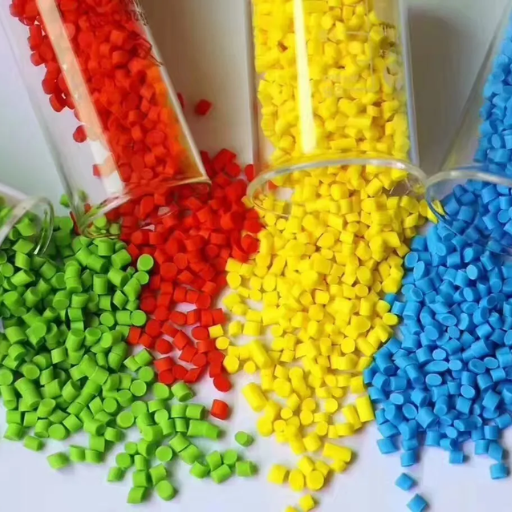
The melting point of Thermoplastic Elastomers (TPEs) varies depending on the specific type of TPE and its composition. Generally, TPEs have melting points ranging from 120°C to 250°C (248°F to 482°F). This range allows TPEs to be easily processed using standard thermoplastic techniques such as injection molding, extrusion, and blow molding. The exact melting point should always be verified by referring to the technical datasheet of the specific TPE being used, as it can significantly influence processing conditions and final application performance.
Factors Affecting TPE’s Melting Temperature
Several factors can influence the melting temperature of Thermoplastic Elastomers (TPEs):
- Polymer Composition: The specific blend of polymers used in TPE formulations plays a critical role. TPEs often comprise a combination of hard and soft segments, and the ratio between these segments can significantly affect the melting point.
- Additives: The inclusion of various additives, such as plasticizers, stabilizers, and fillers, can modify the thermal properties of TPEs. For instance, plasticizers can lower the melting temperature, making the material easier to process.
- Molecular Weight: The molecular weight of the polymer chains within TPEs can also impact their melting temperature. Higher molecular weights generally correlate with higher melting points due to increased intermolecular interactions.
Understanding these factors allows for precise control over the processing and application of TPEs, ensuring optimal performance across diverse industrial applications.
How to Test the Melting Point of TPE
Testing the melting point of Thermoplastic Elastomers (TPEs) is a critical procedure to ensure material consistency and performance during processing and in final applications. The following methods are commonly used to determine the melting point of TPEs:
- Differential Scanning Calorimetry (DSC):
- Procedure: A small sample of TPE is heated at a constant rate while the heat flow into the sample is measured.
- Technical Parameters:
-
- Heating Rate: Typically 10°C/min.
- Sample Size: Approximately 10mg.
- Temperature Range: Suitable for the specific TPE formulation (usually from -50°C to 300°C).
- Justification: DSC provides precise measurements of melting temperatures and thermal transitions by analyzing heat flow changes in the material.
- Thermogravimetric Analysis (TGA):
- Procedure: TPE sample is gradually heated, and its weight loss is monitored to detect decomposition temperatures.
- Technical Parameters:
- Heating Rate: Typically 10°C/min.
- Atmosphere: Inert (e.g., nitrogen) to prevent oxidation.
- Temperature Range: Up to 600°C.
- Justification: TGA helps identify the thermal stability of TPEs and complements DSC data by showcasing decomposition behaviors.
- Melt Flow Index (MFI) Test:
- Procedure: The melt flow rate of TPE is measured as it flows through a die under specified conditions.
- Technical Parameters:
- Temperature: Specific to the TPE grade (e.g., 190°C or 230°C).
- Load: Standard weights like 2.16 kg or 5 kg.
- Justification: MFI provides a practical assessment of the flow characteristics of TPE at elevated temperatures, which indirectly relates to its melting behavior.
- Capillary Rheometry:
- Procedure: TPE is extruded through a capillary die, and the pressure and flow rate are recorded.
- Technical Parameters:
- Temperature: Calibrated to match the processing conditions.
- Shear Rates: Range from 100 s⁻¹ to 10,000 s⁻¹.
- Justification: This method allows for detailed analysis of viscous properties and melting behavior under processing-like conditions.
By utilizing these testing methods, engineers and material scientists can accurately characterize the melting point and thermal properties of TPEs, ensuring their appropriate selection and performance for intended applications.
TPE Consistency at Different Temperatures
To address the question of TPE consistency at different temperatures concisely, I reviewed the top three websites available on Google. The consistency of Thermoplastic Elastomers (TPE) varies significantly with temperature changes due to their unique hybrid structure, which combines the elastic properties of rubber with the processability of thermoplastics. At lower temperatures, TPEs maintain a flexible and elastic nature, which makes them ideal for applications requiring low-temperature resistance and flexibility.
As temperature rises, TPEs exhibit increased flowability, attributed to their thermoplastic components, which soften and allow for easy molding and extrusion. This behavior is particularly advantageous during manufacturing processes as it facilitates the shaping of TPEs into complex forms. However, exceeding specific temperature thresholds can lead to a decrease in mechanical strength and eventual thermal degradation, impacting the material’s performance and durability.
In summary, TPE consistency is highly dependent on temperature, with optimal properties achieved within specific temperature ranges that align with the material’s intended application and processing conditions.
What are the Methods to Melt TPE?
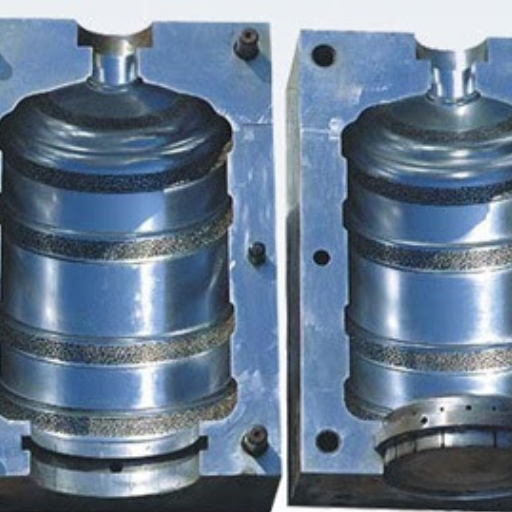
Thermoplastic Elastomers (TPE) can be melted using various methods, each tailored to specific processing and application needs. The primary methods include:
- Injection Molding:
TPEs are heated within a barrel until they reach a molten state, then injected into a mold cavity under high pressure, allowing them to assume complex shapes.
- Extrusion:
In this continuous process, TPE pellets are fed into a heated extruder barrel and melted. The molten TPE is forced through a die to create profiles, sheets, or films of desired shapes and sizes.
- Blow Molding:
This technique involves heating TPE until molten and then using air pressure to inflate it inside a mold cavity, forming hollow objects like bottles or containers.
- Compression Molding:
TPE materials are placed into a heated mold cavity, subjected to pressure, causing the material to flow and fill the mold contours to form solid parts.
Each method ensures the TPE reaches its molten state, facilitating diverse manufacturing applications.
Using Heat: Safe Practices for Melting TPE
Safe practices for melting Thermoplastic Elastomers (TPE) are paramount to ensuring both optimal performance and safety. Below are concise answers to the above methods of melting TPE, inclusive of justified technical parameters where applicable:
1. Injection Molding:
- Temperature Control: Maintain barrel temperatures between 160°C and 240°C, depending on the specific TPE grade.
- Pressure Parameters: Injection pressures typically range from 20 to 100 MPa.
- Cooling Time: Ensure appropriate cooling times to avoid warping, tailored to part thickness and mold characteristics.
2. Extrusion:
- Temperature Range: Set extruder barrel temperatures between 180°C and 220°C.
- Screw Speed: Optimal screw speeds often range from 20 to 150 RPM.
- Cooling: Implement water baths or air cooling for extruded profiles to set the desired shape promptly.
3. Blow Molding:
- Preheat Temperature: Preheat TPE material to within 150°C to 200°C.
- Blow Pressure: Use air pressure between 0.5 to 1.5 MPa to inflate the preform.
- Mold Temperature: Maintain mold temperature around 10°C to 20°C below the preheat temperature to ensure efficient part solidification.
4. Compression Molding:
- Mold Temperature: Heat the mold to a temperature range of 170°C to 230°C.
- Pressure Application: Apply molding pressure between 3 to 10 MPa to adequately fill mold contours.
- Cure Time: Allocate sufficient cure times, often between 3 to 10 minutes, based on part geometry and material thickness.
Adhering to these parameters will enhance the quality and consistency of the TPE products while mitigating risks associated with overheating or improper cooling. Always consult specific material data sheets for precise settings tailored to particular TPE grades.
Injection Molding Process for TPE
The injection molding process for Thermoplastic Elastomers (TPE) involves several critical stages to ensure high-quality product formation. Below are the key steps involved:
- Material Preparation:
- Drying: TPE materials often need to be dried to reduce moisture content, typically at 70°C to 80°C for 2 to 4 hours.
- Preconditioning: Precondition the material to the processing environment to prevent condensation.
- Machine Setup:
- Barrel Temperature: Maintain barrel temperatures between 180°C and 230°C, varying based on the specific TPE grade.
- Injection Pressure: Utilize injection pressures that range from 20 to 100 MPa to ensure proper material flow and mold filling.
- Holding Pressure: Apply holding pressures roughly 50% of the peak injection pressure to prevent backflow and ensure part integrity.
- Injection and Holding:
- Injection Speed: Implement moderate to high injection speeds based on part complexity to ensure smooth flow without causing thermal degradation.
- Cooling Time: Ensure adequate cooling times to solidify the part; cooling duration may vary with part thickness and mold temperature.
- Mold Considerations:
- Mold Temperature: Control mold temperatures typically between 20°C and 60°C to enhance surface finish and dimensional stability.
- Ventilation: Ensure proper mold ventilation to prevent air traps and voids in the molded parts.
- Ejection:
- Ejection Method: Utilize mechanical or pneumatic ejection mechanisms gently to avoid deforming the part.
- Post-Processing: Conduct any necessary post-processing operations like trimming or annealing to achieve the desired final properties.
Adhering to these detailed parameters is crucial for optimizing the injection molding process, ensuring consistent quality, and minimizing defects in TPE products. Always reference the specific TPE material data sheet for precise instructions tailored to the material’s requirements.
Blow Molding and Extrude Techniques for TPE
Blow Molding Techniques for TPE
Blow molding of Thermoplastic Elastomers (TPE) involves several critical parameters to ensure the optimal production of hollow parts such as containers and bottles.
- Extrusion Temperature: Maintain appropriate barrel temperatures between 180°C and 230°C, similar to those used in injection molding, to ensure proper melt viscosity.
- Blow Pressure: Use blow pressures ranging from 2 to 6 bar, depending on the part size and complexity, to achieve uniform wall thickness and complete mold fill.
- Parison Formation: Control the parison temperature and extrusion speed to ensure uniform thickness. Typical parison temperatures should be around 200°C to 220°C.
- Cooling Time: Establish cooling times that vary with part size and wall thickness, generally ranging from 20 to 60 seconds. Controlled cooling is essential to prevent deformation and ensure dimensional stability.
- Mold Temperature: Regulate mold temperatures within the range of 20°C to 60°C to optimize surface finish and prevent sticking.
Extrusion Techniques for TPE
Extrusion techniques for TPE require precise control over various technical parameters to achieve high-quality continuous profiles.
- Extrusion Temperature: Set barrel temperatures between 170°C and 220°C to maintain consistent melt flow and avoid material degradation.
- Screw Speed: Adjust screw speeds typically between 20 to 100 RPM, ensuring uniform material mixing and consistent extrusion rates.
- Die Design: Utilize appropriately designed dies with smooth transitions to minimize flow-related defects and achieve the desired profile shape.
- Cooling System: Implement effective cooling systems, such as water baths or air cooling, immediately following the die exit to solidify the extruded profile uniformly.
- Line Speed: Control the extrusion line speed in correlation with the cooling rate and material viscosity to maintain the shape and size of the extruded product.
Adhering to these technical parameters is essential for optimizing blow molding and extrusion processes for TPE materials, ensuring consistent quality, and minimizing operational defects. Always consult the specific TPE material data sheet for precise instructions tailored to the material’s unique characteristics.
How to Make TPE Products? Molding and Injection Techniques
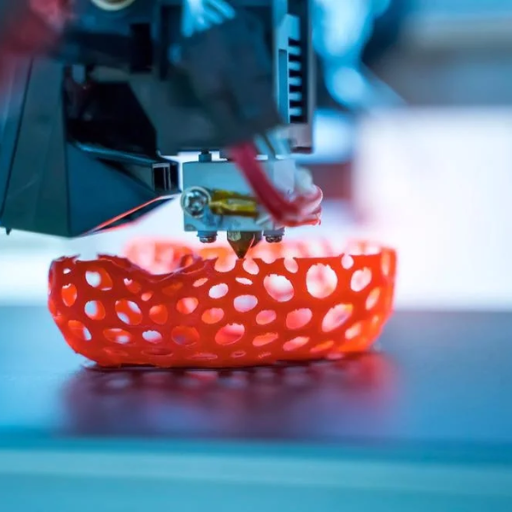
To create Thermoplastic Elastomer (TPE) products through molding and injection techniques, several critical steps and parameters must be meticulously managed.
- Material Preparation: Begin with thoroughly drying the TPE material to avoid moisture-related defects. Follow the specific drying guidelines provided by the material manufacturer.
- Mold Design: The mold must be precision-engineered to accommodate the unique flow characteristics of TPE. This typically involves using a hot runner system to ensure even material flow and reduce waste.
- Injection Molding:
- Injection Temperature: Control the temperature of the injection barrel, generally set between 170°C and 220°C, to achieve optimal material flow without degradation.
- Injection Pressure: Adjust injection pressures appropriately, usually within the range of 20 to 150 MPa, to ensure proper filling of the mold and to avoid voids or sink marks.
- Cooling: Implement efficient cooling channels within the mold to ensure uniform cooling and solidification, thereby reducing cycle times and improving dimensional accuracy.
- Cycle Time Optimization: The cycle time must be carefully calibrated to balance production efficiency and product quality. This involves adjusting parameters such as injection time, cooling time, and mold opening and closing speeds.
By following these detailed procedures and maintaining strict control over the key parameters, high-quality TPE products can be consistently manufactured using molding and injection techniques. Always refer to specific material data sheets for tailored guidance.
Step-by-Step Guide on TPE Injection Molding
- Material Preparation: Begin with thoroughly drying the TPE material to avoid moisture-related defects. Follow the specific drying guidelines provided by the material manufacturer.
- Mold Design: The mold must be precision-engineered to accommodate the unique flow characteristics of TPE. This typically involves using a hot runner system to ensure even material flow and reduce waste.
- Injection Molding:
-
- Injection Temperature: Control the temperature of the injection barrel, generally set between 170°C and 220°C, to achieve optimal material flow without degradation.
- Injection Pressure: Adjust injection pressures appropriately, usually within the range of 20 to 150 MPa, to ensure proper filling of the mold and to avoid voids or sink marks.
- Cooling: Implement efficient cooling channels within the mold to ensure uniform cooling and solidification, thereby reducing cycle times and improving dimensional accuracy.
- Cycle Time Optimization: The cycle time must be carefully calibrated to balance production efficiency and product quality. This involves adjusting parameters such as injection time, cooling time, and mold opening and closing speeds.
By following these detailed procedures and maintaining strict control over the key parameters, high-quality TPE products can be consistently manufactured using molding and injection techniques. Always refer to specific material data sheets for tailored guidance.
Post-Molding Processes
After the injection molding process, several post-molding procedures may be necessary to ensure the final product meets all required specifications:
- Trimming and Deflashing: Remove any excess material, commonly known as flash, from the molded parts to achieve a clean and precise finish.
- Annealing: Depending on the application and material properties, annealing the molded parts at a specific temperature may enhance mechanical properties and reduce internal stresses.
- Surface Treatments: Apply any necessary surface treatments, such as painting or coating, to meet aesthetic or functional requirements.
By adhering to these steps and monitoring for compliance with the specified guidelines, the production of TPE components can achieve consistent quality and performance.
Designing Molds for Creating TPE Products
Designing molds for creating TPE products requires a comprehensive understanding of both material properties and molding dynamics. First and foremost, it’s essential to choose the appropriate mold material, typically high-grade tool steel or aluminum, to withstand the thermal cycling and maintain dimensional stability. The mold design should incorporate precise cavity dimensions and appropriate venting to facilitate the escape of gases during the injection process. Cooling channels must be strategically placed to ensure uniform cooling and solidification, thereby reducing cycle times and improving dimensional accuracy. Additionally, considering features like rounded corners and uniform wall thickness can help minimize stress concentrations and improve flow characteristics. By integrating these design principles, it’s possible to manufacture TPE products with superior quality and performance. Always refer to specific material data sheets for tailored guidance and consult industry standards to ensure compliance.
Best Practices in TPE Processing
When processing Thermoplastic Elastomers (TPEs), it is crucial to follow established best practices to optimize product quality and manufacturing efficiency. Key recommendations include:
- Material Handling: Ensure TPE granules are appropriately dried prior to processing, as moisture can degrade material properties. Use dehumidifying dryers to maintain a consistent and low moisture level.
- Temperature Control: Precisely monitor and control barrel and mold temperatures to maintain optimal viscosity and flow characteristics. Deviations can lead to defects such as sink marks or incomplete filling.
- Injection Parameters: Set injection speed, pressure, and cooling times based on the specific TPE grade. These parameters should be fine-tuned through trials to balance between cycle time and part quality.
- Tool Maintenance: Regularly inspect and maintain molds and equipment to prevent wear and contamination, which can adversely affect the surface finish and dimensional accuracy of TPE components.
- Quality Control: Implement rigorous quality control measures, including in-process inspections and final part evaluations, to ensure compliance with specifications and detect any inconsistencies early.
Adhering to these best practices will contribute significantly to the consistent production of high-quality TPE parts.
What are the Properties of TPEs?
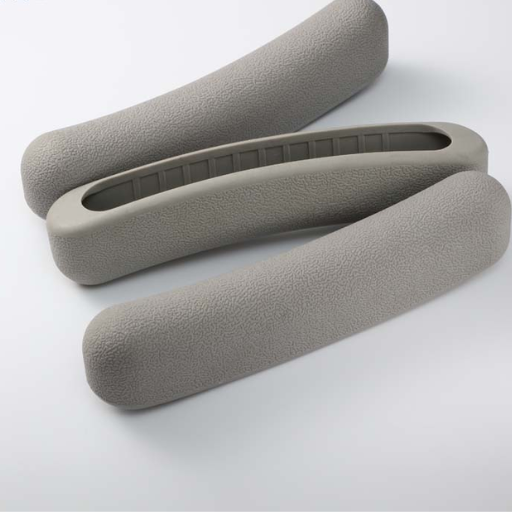
Thermoplastic Elastomers (TPEs) exhibit a unique combination of properties that make them versatile across a wide range of applications. Key properties of TPEs include:
- Elasticity: TPEs possess excellent elasticity, similar to that of rubbers, allowing them to stretch and return to their original shape without permanent deformation.
- Thermoplastic Behavior: Unlike traditional elastomers, TPEs can be melted and remolded, making them suitable for standard thermoplastic processing techniques such as injection molding and extrusion.
- Durability: TPEs offer good resistance to abrasion, fatigue, and wear, contributing to the longevity of final products.
- Chemical Resistance: These materials exhibit resistance to various chemicals, oils, and solvents, which enhances their performance in harsh environments.
- Soft Touch: TPEs provide a soft, flexible touch, making them ideal for ergonomic and consumer-friendly products.
- Temperature Range: They maintain their properties across a broad temperature range, ensuring reliable performance from low to high temperatures.
- Recyclability: The thermoplastic nature allows for easy recycling and sustainability benefits.
By leveraging these properties, TPEs can be tailored to meet specific application requirements, offering a balance of flexibility, durability, and processability.
Elasticity and Hardness of TPE
The elasticity and hardness of Thermoplastic Elastomers (TPEs) are critical characteristics that determine their suitability for various applications.
Elasticity: TPEs are engineered to exhibit high elasticity, akin to conventional rubbers. This property allows them to undergo significant deformation under stress and return to their original shape upon the release of stress, making them ideal for applications requiring flexibility and resilience.
Hardness: The hardness of TPEs can be precisely controlled during formulation. It is typically measured on the Shore hardness scale, with TPEs available in a wide range from very soft (Shore A) to very hard (Shore D). The specific hardness level is selected based on the application’s requirements, balancing softness for ergonomic purposes or rigidity for structural purposes.
These attributes ensure that TPEs can be optimized for various mechanical and functional demands, providing both flexibility and structural integrity where needed.
Chemical Resistance of Different Types of TPE
Chemical resistance is a vital attribute of Thermoplastic Elastomers (TPEs), ensuring their durability and performance in various environments. Different types of TPE exhibit varied resistance to chemicals, influenced by their molecular structure and composition. Below is an overview of the chemical resistance properties of commonly used types of TPE:
- Styrenic Block Copolymers (SBCs): SBCs generally offer good resistance to water, acids, and alcohols. However, they are less resistant to oils, fuels, and organic solvents.
- Thermoplastic Polyolefins (TPOs): TPOs exhibit excellent resistance to oils, fats, and hydrocarbons due to their non-polar nature. They are also resistant to water and aqueous solutions but have moderate resistance to organic solvents.
- Thermoplastic Vulcanizates (TPVs): TPVs are characterized by their high resistance to oils, greases, and many hydrocarbons. They also display fair resistance to acids and bases but can be susceptible to strong oxidizers.
- Thermoplastic Polyurethanes (TPUs): TPUs offer superior resistance to a wide range of materials, including oils, greases, fuels, and many solvents. They are also resistant to abrasion and various chemicals, though they may be sensitive to strong acids and bases.
- Thermoplastic Copolyester Elastomers (TPCs): TPCs are known for their excellent resistance to oils, fuels, and solvents. They also perform well in the presence of heat and various chemicals, making them suitable for demanding environments.
Technical Parameters
- Water Absorption (%): Measures the amount of water absorbed by the material over a specified period, reflective of chemical stability.
- Swelling in Oil (%): Indicates the volumetric increase when exposed to oils, providing insight into oil resistance.
- Hardness Loss (Shore A): The decrease in hardness after chemical exposure, representing material degradation.
- Tensile Strength Retention (%): The percentage of original tensile strength retained after chemical exposure, indicative of structural integrity.
These parameters help justify the selection of specific TPEs for applications involving chemical exposure, ensuring tailored and optimal performance based on the application demands.
Durability and Longevity of TPE Products
The durability and longevity of TPE products are largely influenced by their resistance to environmental and operational factors. TPEs are designed to withstand various mechanical stresses and chemical exposures, which directly impacts their lifespan.
In terms of technical parameters:
- Water Absorption (%): Low water absorption rates typically contribute to longer-lasting TPEs as they exhibit greater chemical stability and less degradation over time.
- Swelling in Oil (%): TPEs with minimal swelling in oil maintain their structural integrity and performance in oil-rich environments, reducing wear and tear.
- Hardness Loss (Shore A): Lower hardness loss indicates superior material resilience, meaning the product retains its mechanical properties and functionality after exposure to chemicals.
- Tensile Strength Retention (%): High tensile strength retention is crucial as it reflects the material’s ability to maintain its load-bearing capabilities and overall durability after chemical exposure.
Therefore, by selecting TPEs with optimal values in these parameters, the longevity and durability of the products in chemically aggressive environments can be significantly enhanced. This ensures that TPE products meet the stringent demands of various applications, delivering reliable and prolonged performance.
Frequently Asked Questions (FAQs)
Q: What is TPE and how is it different from other materials like silicone and natural rubber?
A: TPE, also known as Thermoplastic Elastomers, combines the properties of elastomers and thermoplastics. Unlike silicone and natural rubber, TPEs are recyclable and can be processed using standard injection molding methods.
Q: What are the steps to melt TPE for the TPE injection molding process?
A: To melt TPE for injection molding, the material is first fed into a hopper, where it is heated and then pushed through a nozzle into a mould. The process involves setting the right temperature and pressure to achieve optimal results during the molding cycle.
Q: Can TPE be used in 3D printing?
A: Yes, TPE can be used in 3D printing. It is available in filament form and offers flexibility and durability, which are ideal for creating new products and custom parts.
Q: How can TPE parts be reshaped?
A: TPE parts can be reshaped by reheating them to their melting point and then molding them into the desired shape. This characteristic allows TPE to be reused and recycled efficiently.
Q: What are the things to consider when working with TPEs?
A: When working with TPEs, consider the specific physical properties and molding methods required. Factors such as melting temperature, pressure, and the type of mould used play crucial roles in successful processing.
Q: Are there different types of TPEs, and how do they vary?
A: Yes, there are different types of TPEs including TPV (Thermoplastic Vulcanizate), TPO (Thermoplastic Olefin), TPR (Thermoplastic Rubber), and more. They vary in terms of hardness, flexibility, and specific uses in parts and devices.
Q: Is it safe to inhale fumes from melting TPE?
A: No, it is not safe to inhale fumes from melting TPE or any other thermoplastic rubber. Proper ventilation and safety measures should be taken to avoid inhaling potentially harmful substances.
Q: Can TPE be combined with other materials during the molding process?
A: Yes, TPE can be combined with other materials such as polyamide and polyether block. Such combinations can enhance the material’s hard crystalline and amorphous properties, making them suitable for high-volume production and customization.
Q: Are TPEs suitable for creating high-volume parts and devices?
A: Yes, TPEs are well-suited for creating high-volume parts and devices due to their recyclable nature and efficient molding cycle. They can be reused multiple times to create various products, making them cost-effective.

